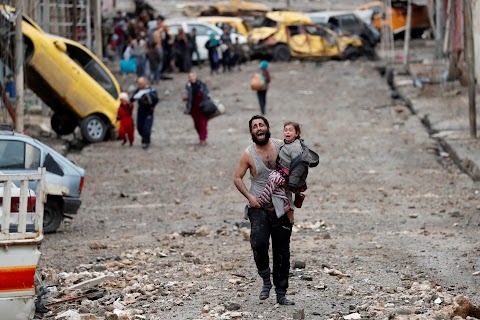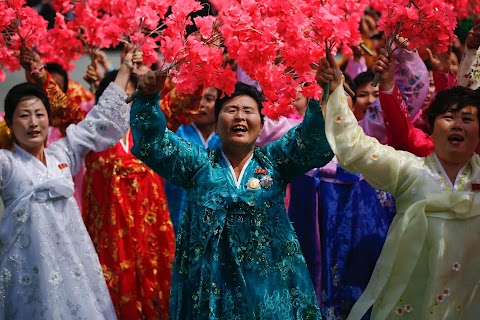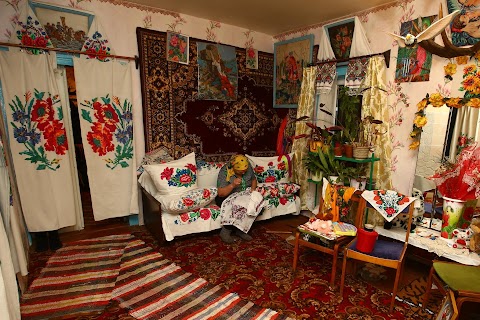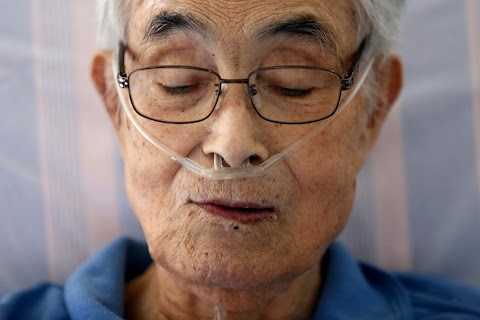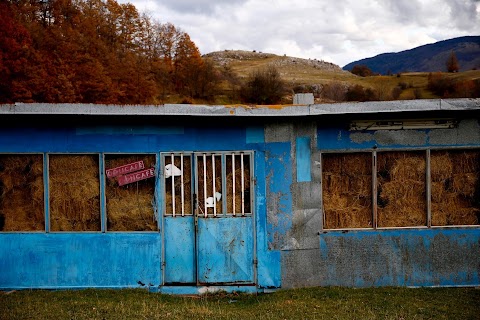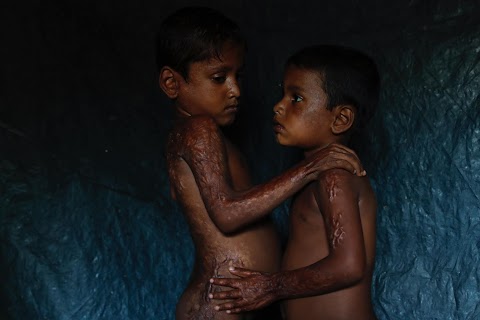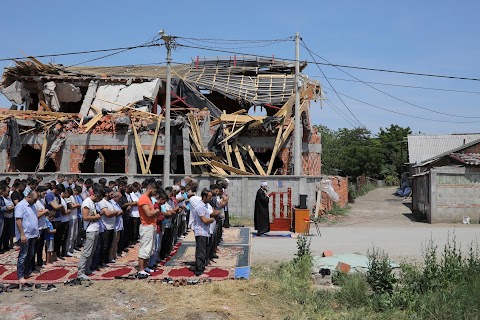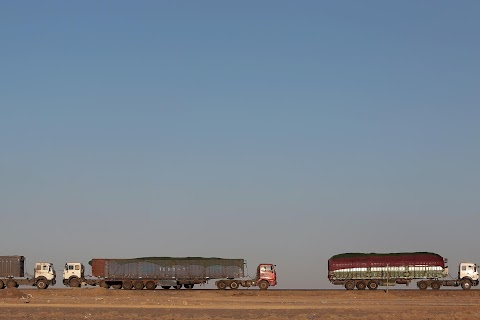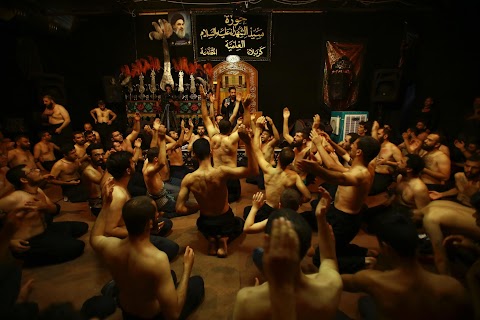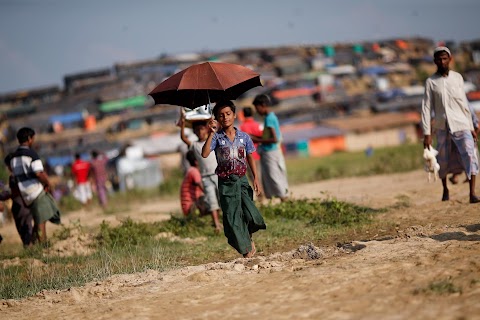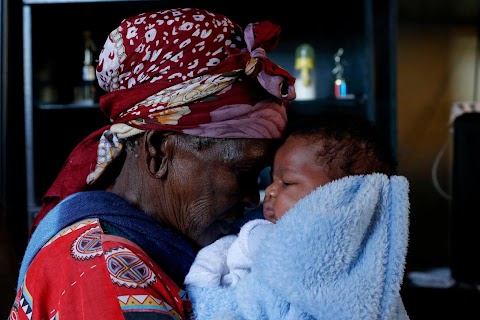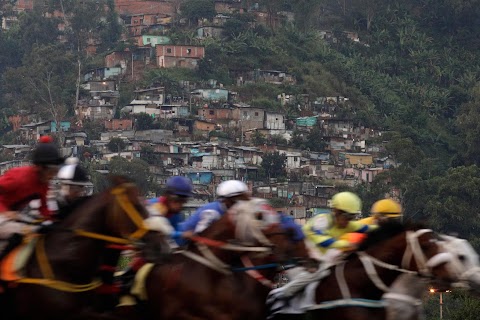
Year of protests and crisis in volatile Venezuela
Even by the volatile and violent standards of recent times in Venezuela, 2017 was an exceptional year, a “perfect storm” of political and economic crisis.
Going into a fourth year of crippling recession, Venezuela’s 30 million people found themselves skipping meals, suffering shortages of basic foods and medicines, jostling in lines for ever-scarcer subsidized goods, unable to keep up with dizzying inflation rates, and emigrating in ever larger numbers.
In unprecedented scenes for the once-prosperous OPEC nation, some citizens survived only by scavenging through garbage.

Not surprisingly in that context, President Nicolas Maduro’s ruling Socialists – the inheritors of Hugo Chavez’s “21st century revolution” - - lost popularity on the street, and the opposition coalition sensed a chance to unseat them.
The tipping point came in March when the pro-Maduro Supreme Court essentially took over functions of the opposition-led National Assembly. Though the controversial ruling was later modified, it was a trigger and rallying cry for the opposition, which began a campaign of street protests that ran from April to July.
Hundreds of thousands took to the streets across Venezuela, decrying economic hardship, demanding a presidential election, urging a foreign humanitarian aid corridor, and seeking freedom for scores of jailed activists. Slogans that read “Maduro, murderer!” and “Maduro, dictator!” began appearing on roads and walls around the country. Though the majority of protesters were peaceful, youths wearing masks and brandishing homemade Viking-style shields began turning up at the front of rallies to taunt security forces.

When police and National Guard soldiers blocked marches, youths threw Molotov cocktails and stones. The security forces quickly escalated tactics, routinely turning water-cannons on the protesters and firing teargas into crowds.
Guns appeared on the streets, and on several occasions security officials were caught on camera firing directly at demonstrators. Police were targeted with homemade explosives. Opposition supporters burned one man alive. The deaths, injuries and arrests mounted. Over the chaotic months, at least 125 people died, thousands were injured and thousands were jailed.
Global opinion hardened against Maduro. Amid the extraordinary daily events, gangs burst into the National Assembly and beat up opposition lawmakers. The nation’s best-known jailed opposition leader, Leopoldo Lopez, was released from prison and placed on home arrest to the joy of his supporters, then taken back to jail, then allowed home again, all in a matter of days.

Venezuelans grew accustomed to navigating their way through barricades and burning streets as they tried to get to school and work. Some days, the country virtually shut down.
By the end of July, many opposition supporters feared for their lives and protest numbers dwindled. Maduro said he was defeating a U.S.-backed coup attempt and authorities held an election, which the opposition boycotted, for an all-powerful Constituent Assembly charged with imposing order on the country.
Having failed to block the Constituent Assembly, the protests fizzled out, leaving opposition supporters nursing their wounds and planning their next moves.
They decided to tackle Maduro at the ballot-box in regional elections in October, but that backfired badly when they lost most of the governorships despite polls showing they would win. The opposition alleged fraud, but their complaints did not get traction and Maduro cemented his authority.
In November, Venezuela said it planned to re-negotiate its entire foreign debt, adding another dimension to the deepening national crisis.
Slideshow

A demonstrator throws back a tear gas grenade while clashing with riot police during the so-called "mother of all marches" against Venezuela's President Nicolas Maduro. Maduro said that beneath a peaceful facade, the protests were little more than opposition efforts to foment a coup to end socialism in Venezuela. The opposition said he has morphed into a dictator and accused his government of using armed civilians to spread violence and fear.

The clashes began after authorities closed subway stations, set up checkpoints and cordoned off a square where opponents had planned their latest protest against the government and the crippling economic crisis. Carlos Garcia Rawlins: "For me that was the day that made a difference, never before had I seen the protesters and police clashing men-to-men and struggling back and forward. From then, the strategy of the police changed and they never faced the protesters so close again."

In Caracas, around 120 medicine students, doctors, and volunteers have revived a primary care response team first created during 2014's bout of anti-government protests. While they wear white helmets with a green cross, none wear flak jackets and some resort to wearing goggles to protect themselves from tear gas. Their equipment has nearly all been donated or bought by the volunteers themselves, and they've had to create makeshift neck braces from shoes, belts, and hats.

Marco Bello: "In that moment, demonstrators attacked a couple of National Guards when they fell off a bike during clashes. Then another National Guard driving an armoured vehicle ran over the motorbike, trying to intimidate demonstrators and to rescue their fellow guards. The reaction of the crowd was to attack, throwing rocks and molotov cocktails and trying to jump over the truck. In the midst of confrontation and confusion, the driver drove back hitting people."

A demonstrator shouts slogans in front of police officers during a women's march to protest against President Nicolas Maduro's government. The women's marches, which took place in most major cities around the country, were the latest in five weeks of sustained protests against Maduro. In Caracas, marchers sang the national anthem and shouted 'We want elections!'. They were halted at various points by lines of policewomen and National Guard troops with armoured cars. Carlos Garcia Rawlins: "Unlike most of the previous protests, after many hours the protesters decided to leave and there were no violent clashes."

Marco Bello: "A group of protesters, most of them hooded and with makeshift shields, were chasing a man so I followed them. The protesters caught him and someone had poured gasoline over the man and set him on fire. The government said that the man was set on fire for being "chavista" but all I heard throughout was that he was being accused of trying to steal from a woman. I didn't hear anyone accusing him of being a pro-government infiltrator. The mob was crazy, you cannot reason with them, they do not think. Orlando Figuera, 22, passed away two weeks later."

Volunteer members of a primary care response team help a child. Carlos Garcia Rawlins: "In their attempt to go beyond the blockade of the police, demonstrators changed the route taking some alternate streets. That caused clashes with the security forces to start in the middle of a residential area and many people who were not taking part in the protest, were trapped between the stones and the tear gas. In the middle of the chaos, someone shouted, 'A boy, a boy!' so I ran and when I arrived at the place, a group of volunteers were helping this crying and disoriented boy."

Carlos Barria: "Every day protesters gathered around Altamira Plaza and started to march towards the downtown area. Protesters walked along a main highway and riot police would intercept them to contain the crowd. Clashes erupted when they met, with tear gas and water cannons were used. This student walked towards a water cannon wearing a backpack, as if he had just come out of class. As he got closer, the riot police turned the water canon directly on him. Then, the student began jumping and dodging, trying to avoid the blast of water. He looked almost as if he were dancing in the rain."

Carlos Garcia Rawlins: "I remember clearly how instants after I spotted (opposition lawmaker) Paparoni standing in front of 'The Whale', the common name of the water cannon armoured cars, he was flying through the air due to the unstoppable power of the water, as if he was a feather. Fellow protesters had to drag him out of the place, because from where I was, he seemed to have been unconscious."

Carlos Eduardo Ramirez: "Security forces arrived to disperse demonstrators that already had burned two taxis and a bus, throwing tear gas and pellets and the demonstrators' response was to throw molotov cocktails and one of those petrol bombs reached a National Guard member, setting him and the motorbike on fire."

Drawing inspiration from the Ukraine's 2013-14 revolt, Venezuela's young protesters are donning Viking-like shields in battles with security forces and eagerly watching a film on the Kiev uprising. The protesters use the shields to form walls, or even beat on them in unison, mimicking the Norsemen's battle cry. Fellow demonstrators cheer as the self-styled 'Resistance' members link arms to walk to the front lines and face off with National Guard troops and police.

Paramedics try to help a demonstrator who was fatally injured during riots at a rally. The government said Neomar Lander died when a homemade mortar exploded in his hands while hundreds of youths faced off with National Guard troops in the Venezuelan capital. Opposition lawmakers, however, said he was killed by a tear gas canister fired straight at him. The state prosecutor's office announced a probe, without giving details. Carlos Garcia Rawlins: "In the middle of the street, both paramedics and fellow demonstrators tried to resuscitate him, while everyone around desperately cried and shouted. It was just a few minutes, but with the intensity of the moment, it felt like hours. I saw his fellow protesters crying like little boys only minutes after fighting with security forces like warriors."

Ivan Alvarado: "I was under the highway photographing some protestors who had surrounded a woman they accused of stealing a phone from someone. I turned around to check what was happening behind me and saw this man appearing from the shadows to see what was going on. The white on his face is salt, which the protestors said helped to reduce the effects of the tear gas."

Carlos Garcia Rawlins: "Once again, protesters clashed with security forces in front of an air base during an opposition rally in Caracas. In a matter of seconds, a demonstrator standing in a gap in the fence of the base, jumped down as a group of military men carrying long firearms approached from inside. Vallenilla, who was crouched down on the highway covered by the fence, stood up at just a few feet from the soldier, who began shooting. He fell to the ground, and immediately got to his feet to escape, as another activist wrapped in the Venezuelan flag and carrying a flimsy wooden shield, tried to give him cover and also came under fire. Fellow protesters gathered round Vallenilla to drag him away, so I rushed in and by then he looked very badly injured. Vallenilla died later in hospital."

An injured opposition supporter is helped by volunteer members of a primary care response team. Ivan Alvarado: "This image was taken next to an airforce base where another protestor was fatally injured that day. I don't know how this man was injured, I first saw him as the first aid volunteers carried him out from the midst of the tear gas. You can really see the pain in his expression as he cries out. After I took the image the motorbike speeded off down the highway."

Ivan Alvarado: "This was one of the last really big rallies, and the number of protestors coming out on the streets started to decrease. The protesters used trucks to make barricades and block the streets in the Altamira area. This truck was being driven quite slowly, and I shot the image at a slow shutter speed panning to capture the sense of movement of the truck. I like the man standing on the top of the truck who looks like he is urging the group onto action."

Ivan Alvarado: "The street was open and empty a little while before I took this picture. The man wearing the Venezuelan flag jacket brought the tyres to the middle of the highway and set them alight. For me the highway in this image acts like an imaginary border that divides two realities in Caracas - behind me was the chaos and tear gas at the rally and across the other side of the road a quiet scene of the houses stacked up on the hill."

Carlos Garcia Rawlins: "Groups of government supporters busted into Venezuela's opposition-controlled National Assembly. I tried to follow a small group as they pushed their way through the main building. By the time I got into the building, they had finished hitting people and were leaving. I quickly went over to the politician, Leonardo Regnault, whose grey suit was spattered in blood, he was clearly in a state of shock. Another opposition lawmaker, Luis Stefanelli had his hands up in a sign of surrender and was pleading with the attackers to stop. Minutes later, the attackers were expelled but government supporters remained outside and kept us trapped. Regnault was treated and then evacuated in an ambulance. Eventually, state security forces pushed back the government supporters and created a path out for us, more than eight hours after I first arrived."

Marco Bello: "Lopez was transferred from the Ramo Verde military jail in the middle of the night and the news broke really early in the morning. A lot of people, including opposition supporters, politicians and media, were waiting for him to show up. We all knew that he would, despite the fact that he had been forbidden to do so. After several hours, Freddy Guevara, lawmaker of the MUD, came out to read a statement and while he was doing so, Lopez appeared over a wall of his Caracas house, waving the Venezuelan flag and punching the air. The sea of supporters cheered and cried upon seeing him."

A demonstrator prepares petrol bombs during a strike called to protest against Venezuelan President Nicolas Maduro's government. Millions participated in a 24-hour shutdown, leaving businesses closed, families behind doors, and streets barricaded or empty across swathes of Venezuela. From dawn of that day, neighbours gathered in some parts of Caracas to block roads with rubbish, stones and tape, while cafes remained shut. There was still, however, a trickle of people on their way to work.

Ueslei Marcelino: "As the young protestor realised that he was being arrested he began to shout his name. I think that he hoped he could warn his relatives through people who were there and maybe through the press".

Carlos Garcia Rawlins: "After many hours of very violent clashes between the demonstrators and security forces, the National Guard in an attempt to end the situation, suddenly advanced their line very quickly, even going beyond where I and other photographers were taking cover. All the protesters who did not react fast enough to leave the place were detained."

Venezuelans have been protesting against Maduro to demand that he respects the opposition-led Congress and resolve chronic food and medicine shortages that have fueled malnutrition and health problems. Security forces, often angry and frustrated, began firing directly at protesters.

Deadly protests rocked Venezuela as opposition voters boycotted an election for a constitutional super-body that unpopular leftist President Nicolas Maduro vowed would begin a 'new era of combat' in the crisis-stricken nation. Carlos Garcia Rawlins: "Suddenly, a bomb exploded in the capital during an opposition protest and wounded seven police officers in what seemed to be the spread of more aggressive tactics. We were taking photos from close by but the police panicked and chased everyone away, firing teargas, rubber bullets and pellets."

Carlos Garcia Rawlins: "After winning a majority in the National Assembly in 2015, lawmakers of the opposition removed all images of the late President Hugo Chavez from the main building and gardens. This act was seen by Chavez's supporters as a huge offence and they promised that someday he would be returned and honoured again. As soon as the Government won the National Constituent Assembly election, the very day of the installation ceremony, elected members and their supporters gathered outside the building and brought images of Chavez back."
